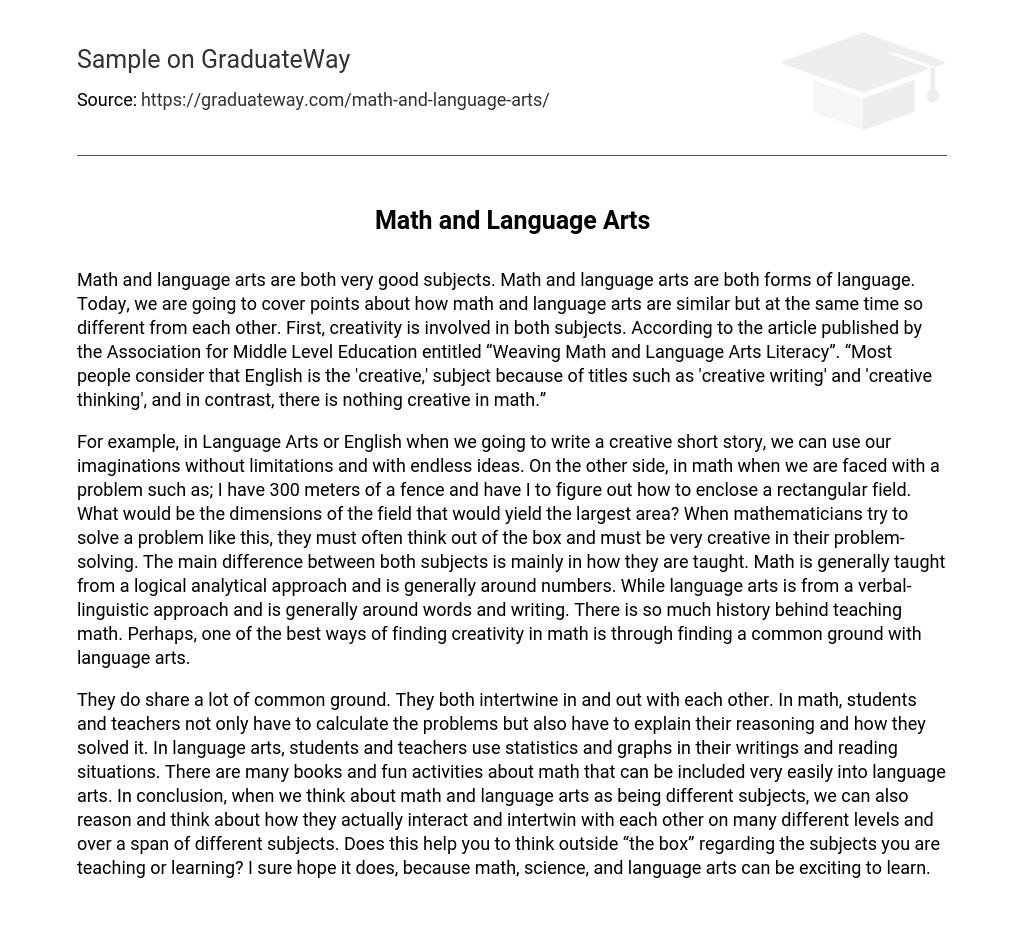Math and language arts are both very good subjects. Math and language arts are both forms of language. Today, we are going to cover points about how math and language arts are similar but at the same time so different from each other. First, creativity is involved in both subjects. According to the article published by the Association for Middle Level Education entitled “Weaving Math and Language Arts Literacy”. “Most people consider that English is the ‘creative,’ subject because of titles such as ‘creative writing’ and ‘creative thinking’, and in contrast, there is nothing creative in math.”
For example, in Language Arts or English when we going to write a creative short story, we can use our imaginations without limitations and with endless ideas. On the other side, in math when we are faced with a problem such as; I have 300 meters of a fence and have I to figure out how to enclose a rectangular field. What would be the dimensions of the field that would yield the largest area? When mathematicians try to solve a problem like this, they must often think out of the box and must be very creative in their problem-solving. The main difference between both subjects is mainly in how they are taught. Math is generally taught from a logical analytical approach and is generally around numbers. While language arts is from a verbal-linguistic approach and is generally around words and writing. There is so much history behind teaching math. Perhaps, one of the best ways of finding creativity in math is through finding a common ground with language arts.
They do share a lot of common ground. They both intertwine in and out with each other. In math, students and teachers not only have to calculate the problems but also have to explain their reasoning and how they solved it. In language arts, students and teachers use statistics and graphs in their writings and reading situations. There are many books and fun activities about math that can be included very easily into language arts. In conclusion, when we think about math and language arts as being different subjects, we can also reason and think about how they actually interact and intertwin with each other on many different levels and over a span of different subjects. Does this help you to think outside “the box” regarding the subjects you are teaching or learning? I sure hope it does, because math, science, and language arts can be exciting to learn.





